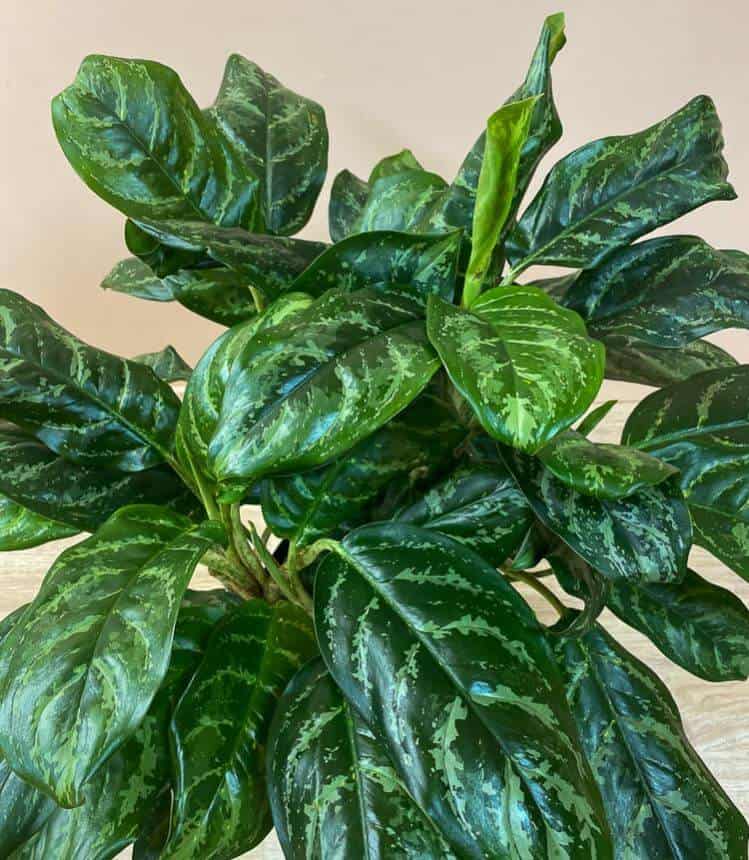Last Updated on February 13, 2023 by a Friendly Gardener
The Aglaonema Calypso plant is a variety of one of the world’s favorite houseplants, the Chinese Evergreen. Delightfully easy to maintain, it manages well in low-light environments like apartments and offices. This specific cultivar was created in 1988 by Parthasarathy Mukundan and Gopalaswamy Parthasarathy in Chamrajpet, Bangalore, India.
The Aglaonema Calypso belongs to the Araceae family and is an uncommon evergreen perennial and is characterized by vigorous, bushy, dense clumping growth. It can grow from a minimum of 8 inches to an impressive four feet in height. Leaves can reach 8 inches in length and four inches in width. They are glossy dark green with yellow blotches interspersed with gray-green chevrons. Lower foliage may feature hues of pale green and cream.
Most Aglaonema varieties will feature some form of variegation. The variegated cultivars will need more light than non-variegated plants.
The Calypso will bloom in the summer producing unisexual blossoms within a spadix. The female flowers are located near the base while male flowers are positioned near the tips. Once the flowers are spent, berries will appear that mature into a shade of red. Each berry contains a single seed.
Aglaonema Calypso Plant Care
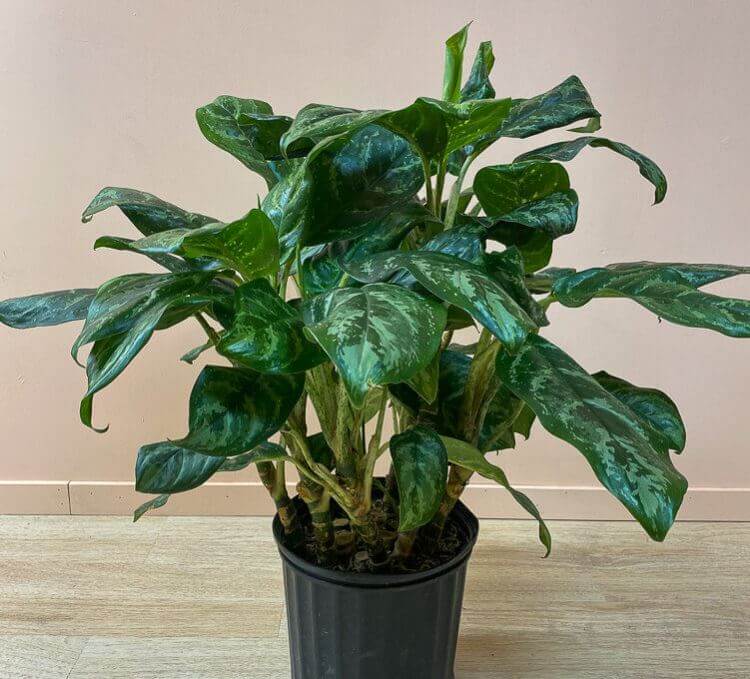
Also referred to as the Aglaonema Calypso Supreme, these houseplants are among the best easy-to-grow varieties available. Resilient and adaptable, it is ideal for most indoor locations and with minimal care will add a bit of lush greenery to your indoor décor.
Soil

This Aglaonema does best in a light substrate that allows for both drainage and aeration. Soil pH is best between 6 and 6.5. Blend two parts of potting soil with one part peat, and one part coarse sand.
Light
This is a lovely houseplant that will adapt to just about any location except for the full sun. Exposure to direct sunlight can scorch the plant’s foliage. Low-light environments work well but if you want a full-looking plant, bright indirect natural light is the best. These plants also do well under fluorescent lights, so they are an ideal choice for offices, studios, and businesses. Consistently low light conditions will slow growth.
Water
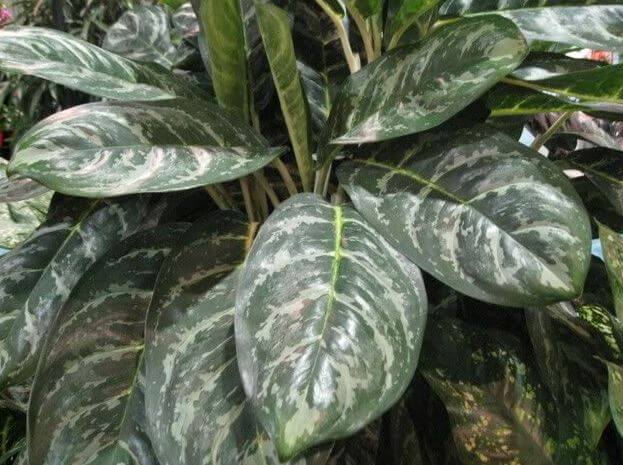
The Aglaonema Calypso does not like soggy soil. In the spring and summer seasons, it will require generous watering as soon as the top of the soil bed feels dry. During the fall and winter reduce watering. Beware that both overwatering and underwatering will harm this plant.
Humidity
The Aglaonema Calypso prefers high humidity. If the environment is dry, leaves will have difficulty unfolding and may be deformed. Tips and margins will dry out. To aid your Calypso, use a pebble tray, space humidifier, or group plants together to create a microclimate. Misting will also help.
Temperature
Ideal temperatures for the Aglaonema Calypso range from 50° to 60°F. The Calypso is not tolerant of cold, so evaluate carefully spots near windows or doors during colder seasons. Cold can also harm leaves. If your winters drop to below freezing, consider moving your plant to a spot away from the doors and windows. Heating units and vents should also be avoided.
Feeding
Plan on feeding your Aglaonema Calypso biweekly beginning in March right through the end of August. Once fall arrives reduce fertilization to every two months, and in winter interrupt feeding. Use a basic liquid houseplant fertilizer with an NPK of 20-20-20 diluted to half-strength.
Pruning
As blooms are not particularly attractive and are of no benefit to the plant, it’s best to nip them off as they appear. They only steal energy When allowed to flower, many new leaves will be smaller and may even appear distorted. Remove dying and damaged foliage.
Potting and Repotting the Aglaonema Calypso
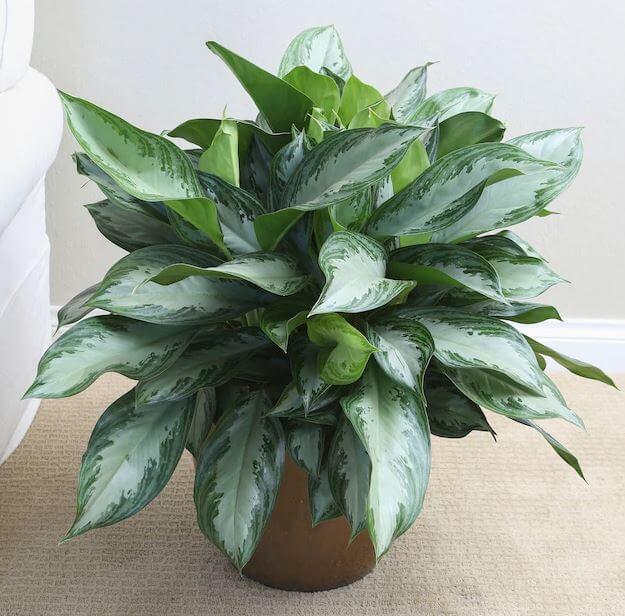
Repot your Aglaonema Calypso in the spring and plan on repotting every third year. You can freshen the soil for nutrients annually.
Aglaonema Calypso Plant Problems
This is a plant that is less susceptible than other houseplants to problems. It can suffer from stem or root rot if the soil bed is excessively wet.
If this plant is kept consistently in low light, it may become leggy in its quest for adequate light sources.
The Aglaonema is relatively resistant to pests however watch for mealybugs. They have a cotton-like appearance and will excrete honeydew, so don’t be surprised if leaves feel sticky. They may lodge on leaf undersides or in the joint where leaves meet stems. Remove them manually and then treat the plant with insecticidal soap or Neem oil. Occasionally aphids, scales, and spider mites can infest this cultivar.
The Aglaonema can suffer from Erwinia bacteria, where both leaves and stems experience slimy rot. Watery spots will appear on foliage only to disintegrate at the center. This bacterium usually develops during propagation.
Fusarium stem rot can also be a problem for the Aglaonemas. Soft, mushy rot will develop at the base of the plant’s stems. Infected plants should be destroyed and properly disposed of.
Aglaonema Calypso Plant Propagation
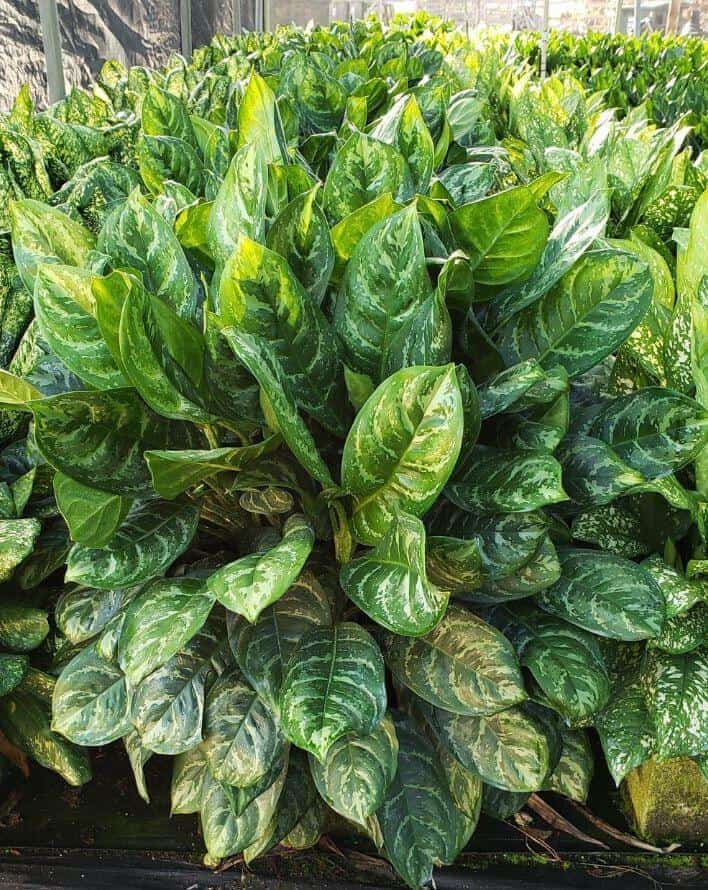
Propagation of the Aglaonema Calypso can be performed in the spring or summer. Propagate your plant the easy way by using division during repotting or transplanting.
Aerial layouts are an alternative. Cut a branch into sections three to four inches in length with leaves on each section. Coat the cut ends with powdered charcoal and lay them aside to dry for 24 hours. Insert the cut ends into a mix of peat moss and wet sand. Position your cuttings in a warm spot. Roots should develop in approximately one month.
Aglaonema Calypso Plant Toxicity
The ASPCA (American Society for the Prevention of Cruelty to Animals)indicates that Aglaonema plant varieties are toxic to both dogs and cats. All parts of these plants contain calcium oxalate crystals which will be released if a leaf or stem is sliced or broken. Calcium oxalate will irritate the skin and mouth causing swelling. Aglaonema ingestion will lead to throat and gastrointestinal tract reactions.
Occasionally, severe swelling will cause partial closure of the upper airways, rendering breathing impossible. Call your local poison prevention center or your veterinarian immediately.
Poisoning symptoms can include localized swelling, excessive drooling, blistering, pain, nausea, diarrhea, vomiting, and a loss of appetite.
The taste of the plant is said to be quite bitter so after one bite most domestic pets will not continue chewing or eating this plant.

